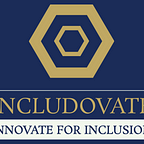Youth Digitalisation and Democratic Participation
By Natalia Pastori Curbelo
Understanding youth digitalisation
Digitalisation is the transformative process of incorporating digital technologies into everyday life, closely linked to developing new technologies and a high social and economic effect. It is a process that continuously shapes societies and predominantly impacts the youngest generations. During the last decade, access to technology and the internet have increased, and digital tools are used for work, communication, information and entertainment (Serban et al, 2020).
Young people are often associated with this transformation and are expected to thrive from these changes. They are frequently considered “digital natives”, meaning they grew up surrounded by digital platforms and information and communications technology (ICT) tools, intuitively know how to use them and understand their benefits and risks (Hellema, 2021).
Following the COVID-19 pandemic, the phenomenon of digitalisation has accelerated and become even more valuable for young people, improving access to information and amplifying their voices towards their communities, society at large and public institutions.
Existing inequalities in youth digitalisation
Despite digital literacy becoming increasingly important, not all young people are equally able to access and adapt to the demands of digital transformation. There are significant gaps in skills and opportunities. Connectivity is one of the first barriers young people face when obtaining technological skills. UNICEF and ITU (2020) state that, worldwide, 2.2 billion children and young people aged 25 years or less do not have an internet connection at home. In South Asia, 768 million children and young people aged 25 years lack internet access. In the regions of East Asia and Pacific and West, Central Eastern and Southern Africa, more than 300 million children and young people lack home internet access (UNICEF and ITU, 2020).
There are also striking differences between countries. Only 6 per cent of children and young people aged 25 years or less in low-income countries have internet access at home, compared to 87 per cent in high-income countries. Likewise, there is a difference between children and young people who live in rural and urban areas. Globally, 25 per cent of people who live in rural areas have access to the internet, while 41 per cent of their urban peers do (UNICEF and ITU, 2020).
Moreover, there are considerable gender differences in access to the internet, with 15–19 years girls less likely than boys to have used the internet in the past 12 months and lower mobile phone ownership, particularly in South Asian countries (UNICEF Gender and Innovation, n.d).
Youth digitalisation and democratic participation
Digitalisation plays a crucial role in young people’s participation in democratic life. The internet, social media, mobile technology and ICT tools are used for issue-oriented activism and give young people a new way of participating in governance and decision-making processes. In addition, they have the potential to create new methods of participation without the limitations of the physical world, involving vast numbers of people or interacting simultaneously with people in multiple places across the world (Moxon, n.d).
Digitalisation provides different tools that enable young people to participate actively, including (Moxon, n.d):
- An information channel to support their participation (news sources, information about political debates and details of policy making)
- A communication channel through which young people can establish a connection and dialogue between each other and other relevant people.
- A platform to create, share and distribute content that helps recruit new participants or disseminate a campaign message.
- A virtual space where virtual communities can form and activities can take place.
Still, there are vital questions around youth digitalisation and participation: how can digital participation be accessible and inclusive to many young people? Furthermore, how can it effectively influence decision and policy making?
Answering such questions is not easy in our ever-changing and evolving world. Digital social inclusion is necessary to ensure that young people from all communities, including the most disadvantaged, access ICT tools, affordable and robust broadband internet service and digital literacy training. Strategies are needed to reduce and eliminate historical, institutional and structural barriers that limit young people’s digital participation and activism.
About the Author
Natalia Pastori Curbelo works as a Bilingual Associate Researcher at Includovate. She graduated from the Republic’s University in Uruguay with a degree in Political Science and later on, completed her Master’s degree in Government and Public Administration from the Complutense University of Madrid (UCM). In 2019, the Organisation of American States (OAS) and the Coimbra Group of Brazilian Universities (GCUB) awarded her a scholarship that allowed her to study at the Fluminense Federal University (UFF) in Brazil and achieve her second Master’s degree in Social Policy. She has experience in Policy Analysis, Policy Evaluation, and Social Network Analysis, mainly focusing on social protection issues, gender, and migration. Natalia is currently based in Brazil and can speak Spanish, English, French and Portuguese, fluently.
Includovate is a feminist research incubator that “walks the talk” by employing people from marginalised groups, women and those with disabilities. Includovate is an Ethiopian-Australian social enterprise consisting of a consulting firm and research incubator that designs solutions for gender equality and social inclusion. To know more about Includovate, follow our social media: @includovate, LinkedIn, Facebook, Instagram.
